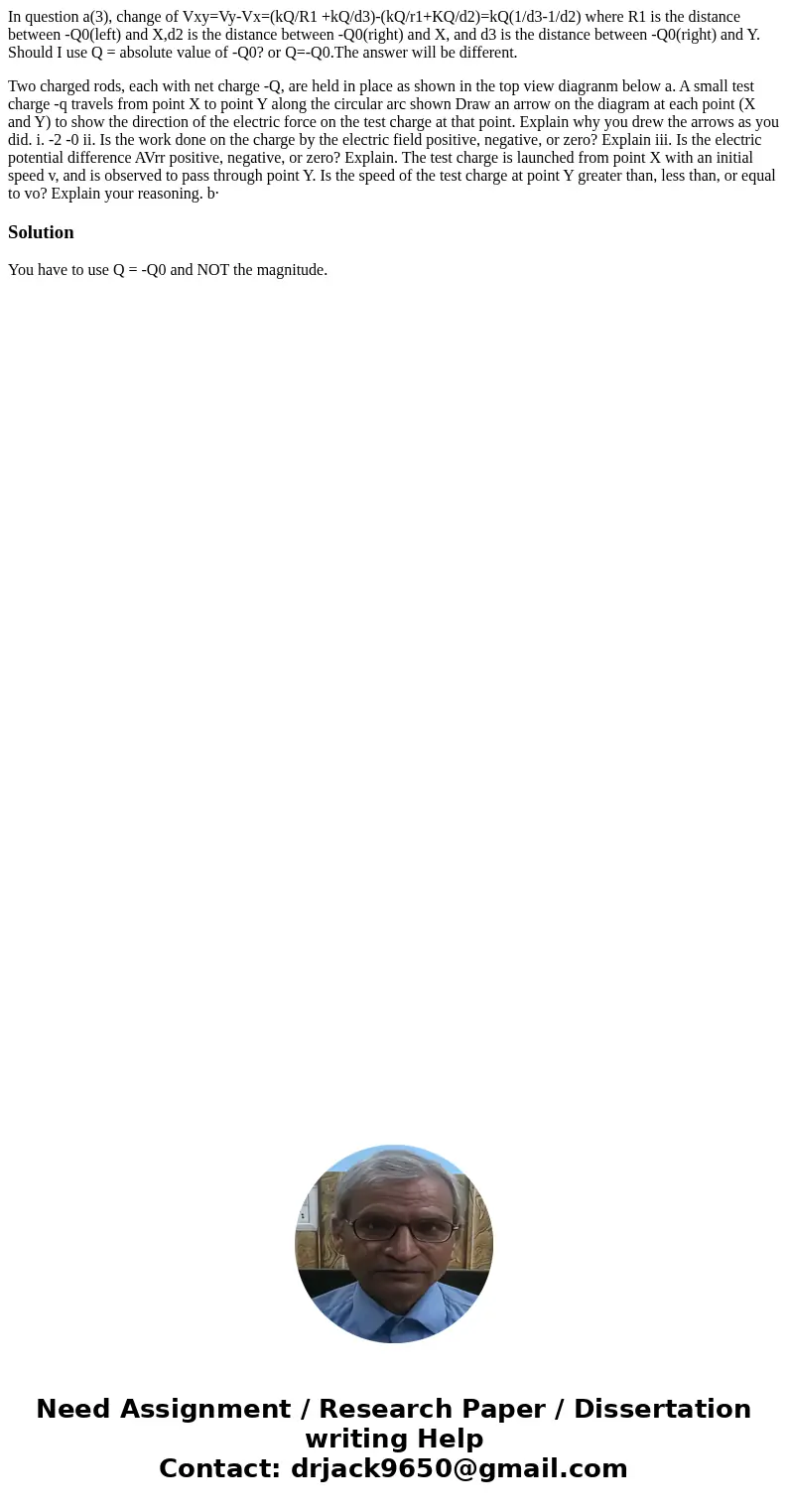In question a3 change of VxyVyVxkQR1 kQd3kQr1KQd2kQ1d31d2 wh
In question a(3), change of Vxy=Vy-Vx=(kQ/R1 +kQ/d3)-(kQ/r1+KQ/d2)=kQ(1/d3-1/d2) where R1 is the distance between -Q0(left) and X,d2 is the distance between -Q0(right) and X, and d3 is the distance between -Q0(right) and Y. Should I use Q = absolute value of -Q0? or Q=-Q0.The answer will be different.
Two charged rods, each with net charge -Q, are held in place as shown in the top view diagranm below a. A small test charge -q travels from point X to point Y along the circular arc shown Draw an arrow on the diagram at each point (X and Y) to show the direction of the electric force on the test charge at that point. Explain why you drew the arrows as you did. i. -2 -0 ii. Is the work done on the charge by the electric field positive, negative, or zero? Explain iii. Is the electric potential difference AVrr positive, negative, or zero? Explain. The test charge is launched from point X with an initial speed v, and is observed to pass through point Y. Is the speed of the test charge at point Y greater than, less than, or equal to vo? Explain your reasoning. b·Solution
You have to use Q = -Q0 and NOT the magnitude.

 Homework Sourse
Homework Sourse